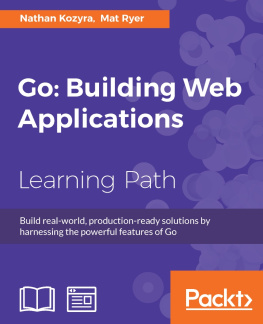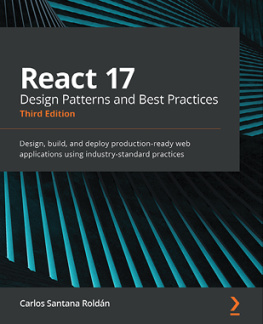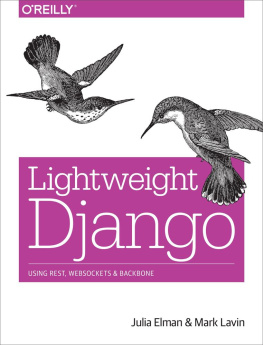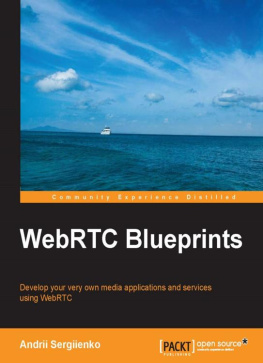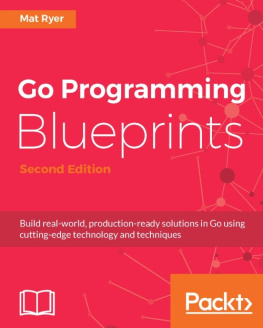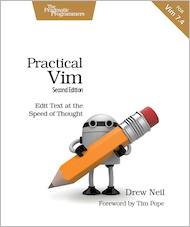Jeremy R. Budnack
Aleksandar S. Sokolovski
Preface
Since the late 1980s and early 1990s, there has been a slow flood of powerful new languages and paradigmsPerl, Python, Ruby, PHP, and JavaScripthave taken an expanding user base by storm and has become one of the most popular languages (up there with stalwarts such as C, C++, and Java). Multithreading, memory caching, and APIs have allowed multiple processes, dissonant languages, applications, and even separate operating systems to work in congress.
And while this is great, there's a niche that until very recently was largely unserved: powerful, compiled, cross-platform languages with concurrency support that are geared towards systems programmers.
So when Google announced Go in 2009, which included some of the best minds in language design (and programming in general)Rob Pike and Ken Thompson of Bell Labs fame and Robert Griesemer, who worked on Google's JavaScript implementation V8to design a modern, concurrent language with development ease at the forefront.
For Go programming bright future, the team focused on some sore spots in the alternatives, which are as follows:
- Dynamically typed languages havein recent yearsbecome incredibly popular. Go eschews the explicit, "cumbersome" type systems of Java or C++. Go uses type inference, which saves development time, but is still also strongly typed.
- Concurrency, parallelism, pointers/memory access, and garbage collection are unwieldy in the aforementioned languages. Go lets these concepts be as easy or as complicated as you want or need them to be.
- As a newer language, Go has a focus on multicore design that was a necessary afterthought in languages such as C++.
- Go's compiler is super-fast; it's so fast that there are implementations of it that treat Go code as interpreted.
- Although Google designed Go to be a systems language, it's versatile enough to be used in a myriad of ways. Certainly, the focus on advanced, cheap concurrency makes it ideal for network and systems programming.
- Go is loose with syntax, but strict with usage. By this we mean that Go will let you get a little lazy with some lexer tokens, but you still have to produce fundamentally tight code. As Go provides a formatting tool that attempts to clarify your code, you can also spend less time on readability concerns as you're coding
What this learning path covers
, Learning Go Web Development , starts off with introducing and setting up Go before you move on to produce responsive servers that react to certain web endpoint. You will then implement database connections to acquire data and then present it to our users using different template packages. Later on, you will learn about sessions and cookies to retain information before delving with the basics of microservices. By the end of this module, we will be covering the testing, debugging, and the security aspect.
, Go Programming Blueprints , has a project-based approach where you will be building chat application, adding authentication, and adding your own profile pictures in different ways. You will learn how Go makes it easy to build powerful command-line tools to find domain names before building a highly scalable Twitter polling and vote counting engine powered by NSQ and MongoDB. Later on it covers the functionalities of RESTful Data Web Service API and Google Places API before you move on to build a simple but powerful filesystem backup tool for our code projects.
, Mastering Concurrency in Go , introduces you to Concurrency in Go where you will be understanding the Concurrency model and developing a strategy for designing applications. You will learn to create basic and complex communication channels between our goroutines to manage data not only across single or multithreaded systems but also distributed systems. Later on you will be tackling a real-world problem, that is, being able to develop a high performance web server that can handle a very large volume of live, active traffic. You will then learn how to scale your application and make it capable of being expanded in scope, design, and/or capacity. It will then focus on when and where to implement concurrent patterns, utilize parallelism, and ensure data consistency. At the end of this module, we will be logging and testing concurrency before we finally look at the best practices on how to implement complicated and advanced techniques offered by Go.
What you need for this learning path
For this course, any modern computers running a standard Linux flavor, OS X or Windows should be enough to get started. You can find a full list of requirements at https://golang.org/dl/. Later on, you'll also need to have the following software installed:
- MySQL (http://dev.mysql.com/downloads/)
- Couchbase (http://www.couchbase.com/download)
Your choice of IDE is a matter of personal preference.
Who this learning path is for
This course is intended for developers who are new to Go but have previous experience of building web applications and APIs. It is also targeted towards systems or network programmer with some knowledge of Go and concurrency, but would like to know about the implementation of concurrent systems written in Go
Reader feedback
Feedback from our readers is always welcome. Let us know what you think about this coursewhat you liked or disliked. Reader feedback is important for us as it helps us develop titles that you will really get the most out of.
To send us general feedback, simply e-mail <>, and mention the course's title in the subject of your message.

